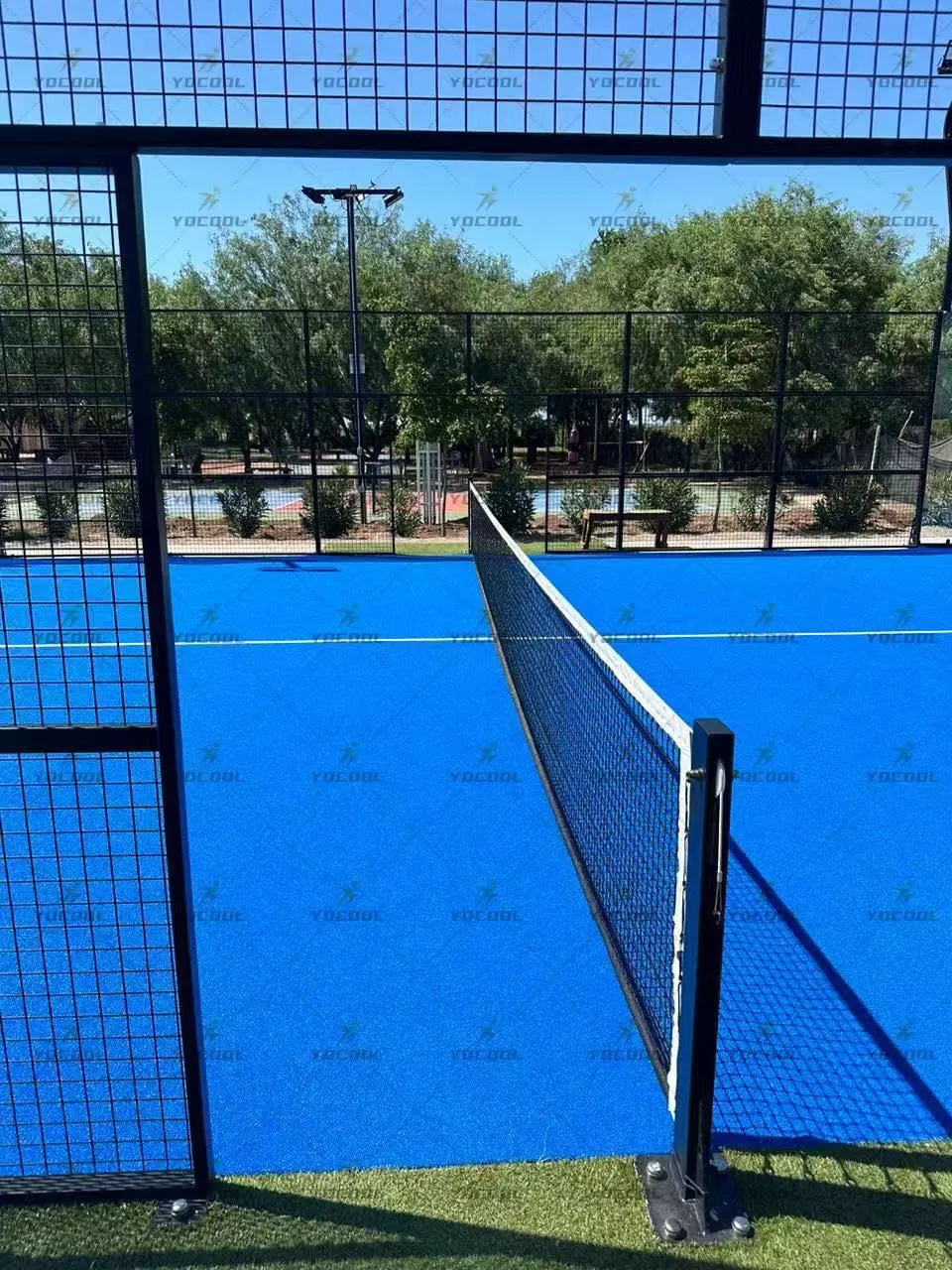

Padel, a dynamic fusion of tennis and squash, has exploded onto the global sports scene, captivating millions of players and spectators. While its rules and gameplay are central to its appeal, the sport’s meteoric rise is inextricably linked to innovations in infrastructure. From panoramic padel courts that merge athleticism with visual spectacle to indoor padel courts that defy weather limitations, the design and accessibility of facilities have redefined how the sport is played, watched, and professionalized. This article explores how infrastructure—spanning design, technology, and strategic installation—has fueled padel’s transformation from a niche hobby to a global phenomenon.

The introduction of panoramic padel courts has revolutionized the spectator experience, turning matches into immersive events. These courts are defined by their transparent walls, which allow audiences to view gameplay from every angle while amplifying the sport’s fast-paced energy. Unlike traditional enclosed setups, panoramic padel courts prioritize visibility, creating a theater-like environment where fans can engage with every smash, volley, and strategic play. This design not only attracts casual viewers but also enhances media coverage, as cameras capture dynamic shots through the glass. By merging aesthetics with functionality, these courts position padel as a spectator sport, appealing to broadcasters and event organizers seeking visually compelling content.
The rise of panoramic padel courts has also influenced urban planning. Cities increasingly incorporate these visually striking facilities into parks, rooftop complexes, and mixed-use developments, transforming underutilized spaces into community hubs. The blend of sport and spectacle has proven instrumental in attracting younger demographics and fostering social engagement, positioning padel as both a recreational activity and a lifestyle choice.
The proliferation of indoor padel courts has democratized access to the sport, enabling year-round play regardless of climate. These facilities often feature climate control, advanced lighting systems, and soundproofing to replicate ideal outdoor conditions. In regions with extreme weather—such as Scandinavia or the Middle East—indoor padel courts have become critical to sustaining player engagement and hosting competitive leagues. Urban centers, where space is scarce, have embraced vertical designs, stacking courts in multi-story complexes to maximize land use.
Beyond weather resistance, indoor padel courts foster inclusivity. By integrating amenities like lounges, training zones, and childcare areas, these facilities cater to diverse demographics, from families to corporate groups. This adaptability has made padel a staple in urban recreation, bridging gaps between casual play and competitive aspirations.
The emergence of single padel courts addresses a critical gap in sports infrastructure: personalized training. Unlike traditional doubles-focused setups, these compact courts are tailored for solo practice or small-group sessions. Equipped with rebound walls, automated ball machines, or adjustable net systems, single padel courts empower players to refine techniques like serves, smashes, and footwork independently. This flexibility is particularly valuable in densely populated cities, where users often face time constraints or limited access to partners.
Single padel courts also lower entry barriers for newcomers. By enabling self-paced learning, they reduce the intimidation factor associated with team sports. Schools and community centers increasingly adopt these courts to introduce padel to younger audiences, fostering early skill development and long-term engagement.
As padel transitions into a professional sport, pro padel courts have become essential to legitimizing its competitive stature. These courts prioritize performance, using surfaces engineered for optimal ball bounce and player traction. Advanced acoustic panels minimize echo, ensuring focus during high-stakes matches, while ergonomic layouts accommodate referees, cameras, and medical staff. Major tournaments, such as the World Padel Tour, rely on pro padel courts to meet broadcast and athletic standards, attracting sponsors and global audiences.
The construction of pro padel courts also drives economic growth. Host cities benefit from tourism surges during events, while local players gain exposure to elite training environments. This synergy between infrastructure and professionalism ensures padel’s place in the global sports ecosystem.
Panoramic padel courts use transparent walls and strategic lighting to create immersive viewing environments, allowing audiences to follow matches from multiple angles. This design amplifies the sport’s visual appeal, making it ideal for broadcasts and live events.
Indoor padel courts ensure year-round accessibility, overcoming weather limitations and enabling consistent training and competition. Their adaptable designs also integrate community-focused amenities, broadening the sport’s appeal.
Yes, single padel courts are designed for versatility. Advanced features like adjustable rebound systems allow players to simulate match scenarios, making them valuable for skill refinement at all levels.
Pro padel courts prioritize performance-grade materials and tournament-specific layouts, ensuring compliance with international standards. They also incorporate infrastructure for broadcasting, medical support, and crowd management.
Installation padel court projects require careful planning around space optimization, regulatory compliance, and durability. Factors like drainage, lighting, and airflow are critical to ensuring long-term functionality and player safety.
From panoramic padel courts that captivate audiences to pro padel courts elevating competitive standards, infrastructure innovations are the cornerstone of padel’s global ascent. By addressing diverse needs—whether through weather-resistant indoor facilities or personalized training spaces—the sport has transcended its origins to become a cultural and athletic staple. As technology and investment continue to evolve, padel courts will remain both the stage and the engine driving its enduring legacy.
Starts with Strategic Padel Court Solutions
Sports Facilities with Innovative Padel Court Construction
Revolutionize Sports Facilities with Custom Padel Court Construction
Master Industrial Racquetball Performance with Professional Equipment
Industrial Expansion Begins with Strategic Padel Court Construction Investments
Construct Future-Ready Sports Facilities with Industrial-Grade Padel Courts